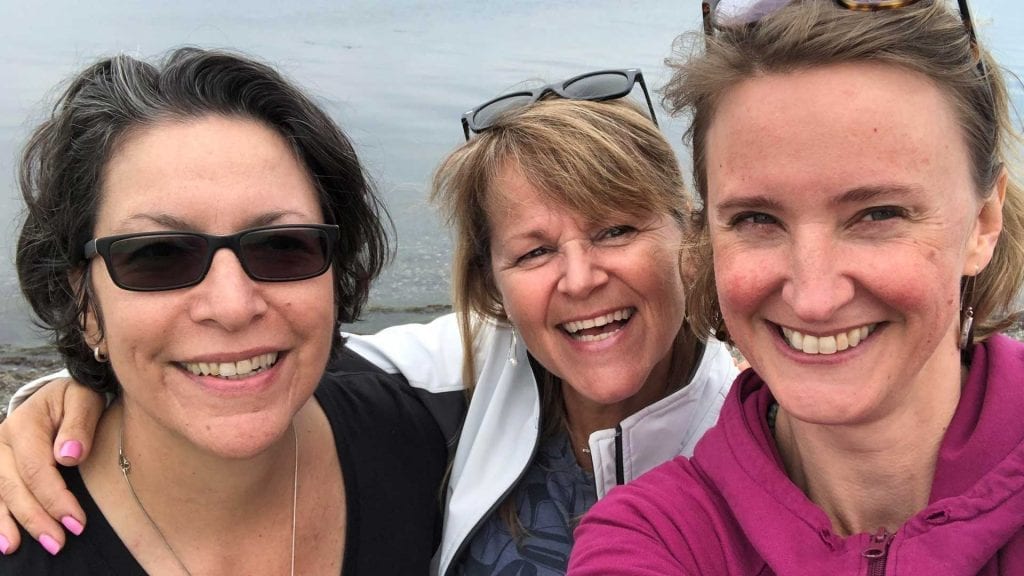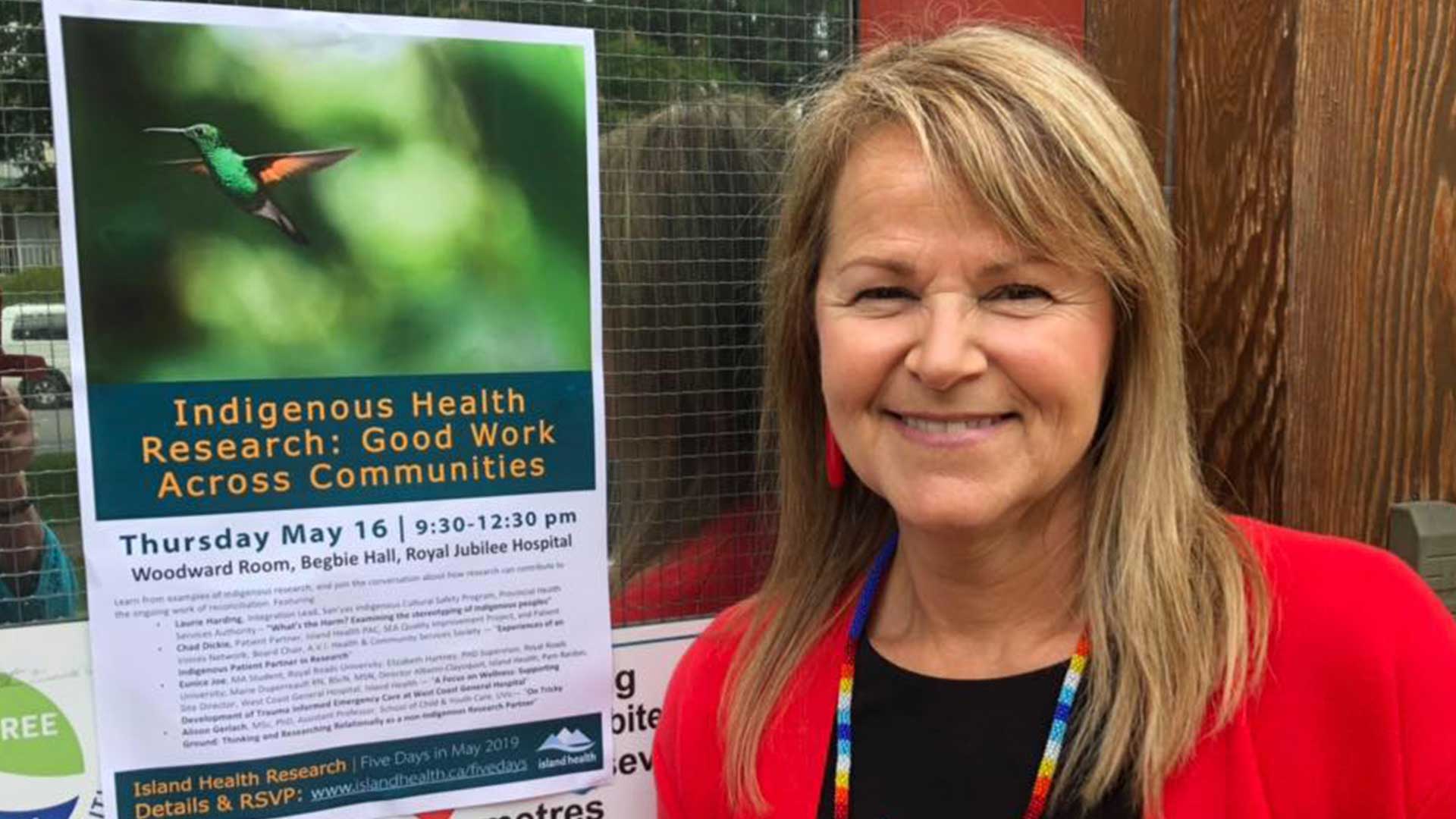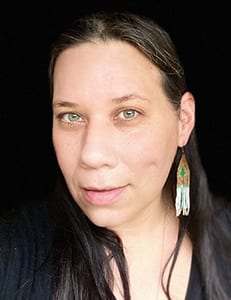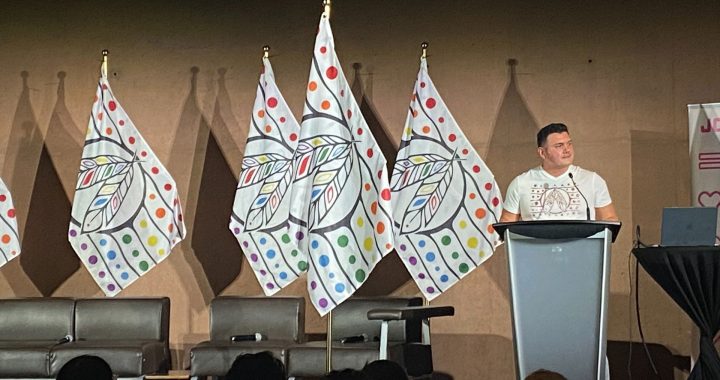
Anti-Indigenous racism trainer and facilitating team combines Indigenous experience with non-Indigenous learning curves. L-R: Rain Daniels, Laurie Harding, Chelsey Branch. Photo Courtesy: Chelsey Branch.
What do you want to see change to stop anti-Indigenous racism? This is a question that Rain Daniels has been asked since the early nineties. Her answer remains the same.
“These issues need to be taken seriously,” she says. “How many times do stories have to be revealed, for all systems to take this seriously, and hold people to account?”
Daniels is an Anishinaabekwe anti-Indigenous racism trainer and member of the Saugeen Nation born in QayQayt territory.
She lives and works on unceded xʷməθkwəy̓əm (Musqueam), Skwxwú7mesh (Squamish), and səl̓ílwətaʔɬ (Tsleil-Waututh) territory.
She’s been doing anti-racism consulting and training for 25 years.
These days, when she does a training she often works with one of her two non-Indigenous colleagues, Laurie Harding or Chelsey Branch.
“I work with a white facilitator, because of what we both of us bring to the conversation,” she says. “I’d say about 90 per cent of my work is with non-Indigenous people, because that is where the work needs to happen.”
Together, they facilitate training for a range of people from healthcare workers, to educators to engineers.
“The First People of this land that have been here for thousands and thousands of years, have some of the worst health outcomes and some of the worst forms of violence, structural violence,” Daniels says.
“People need to know about it, but they need to do way more than just learn about it. You need to do something and take actions with racism and proactive action.”
As people continue to grapple with the death of Joyce Echaquan and the provincial government investigates anti-Indigenous racism, IndigiNews connected with Daniels and Harding to discuss their work.
What does anti-racism training look like?
There’s a wide spectrum of what people want to learn when they attend an anti-racism training, explains Daniels.
“Sometimes people want to learn about culture…other people want to know about privilege, they want to learn what it means, they want to interrupt racism.” she says “And everything in between. So it’s our role as educators, to really focus people in.”
These aren’t always easy conversations.
“Sometimes barbs of resistance start emerging. And it’s a normal part of the education process,” says Daniels.
Discomfort is a natural part of the learning process for most people, says Harding, an experienced facilitator and researcher.
“The goal is always for participants to see themselves as agents of change, as needed in the work to address systemic anti-Indigenous racism, and to see themselves as catalysts for change,” she says.

For Daniels, it’s important that people realize this is “not about shaming yourself,” but instead about “recognizing that we are impacted as a society by a shameful history, and ongoing shameful colonization that prevents people from learning this stuff, and prevents people from naming this stuff.”
“The workshop reinforces the idea that this is just the beginning, and that now you have a role in your organization to follow up,” says Daniels. “What I’m seeing in my work, is requests to take that learning and make it real, and substantial in the organization.”
While in the past these workshops were called “Indigenous cultural safety training,” Harding explains that it’s now more accurate to call them “anti-Indigenous racism training.”
Normalizing racism
While stories of racism are in the media seemingly more than ever, Daniels believes it’s important for people to really understand and normalize what racism is.
“The first knee-jerk response is there’s no racism here,” says Daniels pointing to the RCMP commissioner Brenda Lucki, “struggling” with the idea of systemic racism in reference to Prime Minister Justin Trudeau criticizing police brutality, and Francois Legault stating that there is no racism in the province of Quebec.
She says people are more comfortable calling racism implicit bias.
“People deviate to what’s most comfortable… ‘you know, it’s something we, none of us really know what we’re doing. It’s just an unconscious thing,’” says Daniels.
“[That’s] craziness to me, because what I see in workshops is we go through a process of identifying stereotypes and people know what they are.
“So this knee jerk response to saying it’s all unconscious is really a problem because it minimizes how normalized violence is towards Indigenous people.”
Daniels and Harding agree that a lot of this comes back to the education system and people being taught to think in a biased way.
“The people who are providing services in health, and every other institution: education, health, child and welfare, and justice, are predominantly white settlers,” says Harding who completed doctoral research examining the stereotype harm of Indigenous people in health systems. In her research she says that 70 per cent of people identified as white and Indigenous Peoples were a very small portion.
“If we’re thinking of those systems as sites of harm for Indigenous people, the training needs to include anti-Indigenous racism,” Harding says.
Moving forward
The way forward, Daniels and Harding believe, is accountability.
“There’s a lot of work to be done around that accountability,” says Harding.
“Healthy fear is not a wrong thing, healthy fear of being accountable, of knowing that your actions and your words are being watched. That’s a normal, ethical practice.”
Both women hope that anti-Indigenous racism is taken seriously moving forward..
“My hope is, similar to what I’ve said all along here is that systems have to be accountable to interrupting racism and name racism, use the word racism and engage in anti-racism decolonizing work,” says Daniels.
“When we see that the gravity of harms that have happened to the point of death or Indigenous people, we need to have some healthy concern about what is going on in the service provision for Indigenous people,” says Harding.
“The healing for me is in the work. Being a part of examining what that harm is, where it comes from, and how I can be a part of interrupting or interfering with anti-Indigenous racism.”
Odette Auger is Sagamok Anishnawbek and has been living on the traditional territories of the toq qaymɩxʷ (Klahoose) also known as Cortes Island, for 21 years. Her journalism experience includes writing and producing for First People’s Cultural Council project, and local coop radio cortesradio.ca. Odette’s work is supported in part with funding from the Local Journalism Initiative in partnership with The Discourse and APTN.










